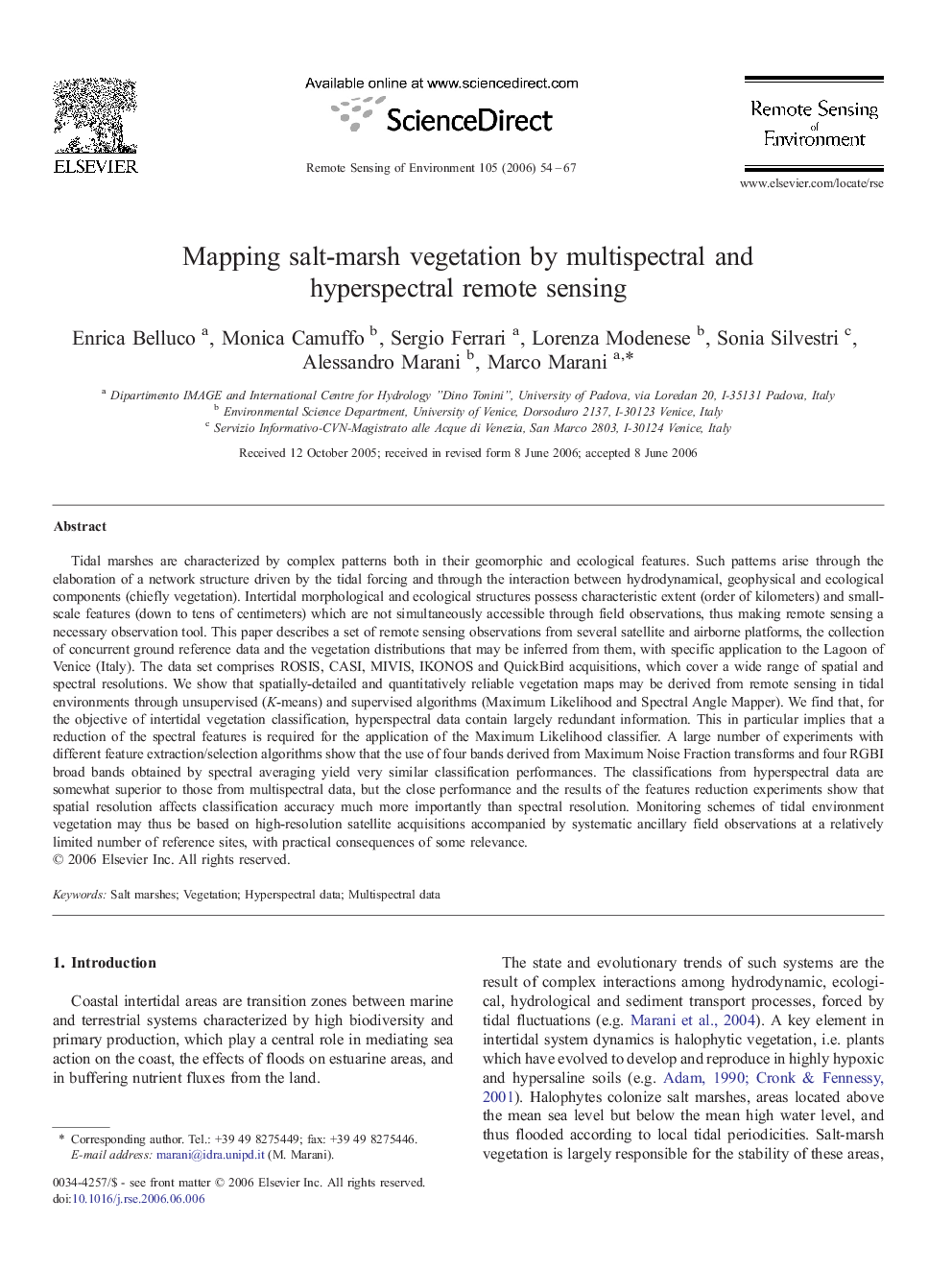| کد مقاله | کد نشریه | سال انتشار | مقاله انگلیسی | نسخه تمام متن |
|---|---|---|---|---|
| 4460916 | 1621359 | 2006 | 14 صفحه PDF | دانلود رایگان |

Tidal marshes are characterized by complex patterns both in their geomorphic and ecological features. Such patterns arise through the elaboration of a network structure driven by the tidal forcing and through the interaction between hydrodynamical, geophysical and ecological components (chiefly vegetation). Intertidal morphological and ecological structures possess characteristic extent (order of kilometers) and small-scale features (down to tens of centimeters) which are not simultaneously accessible through field observations, thus making remote sensing a necessary observation tool. This paper describes a set of remote sensing observations from several satellite and airborne platforms, the collection of concurrent ground reference data and the vegetation distributions that may be inferred from them, with specific application to the Lagoon of Venice (Italy). The data set comprises ROSIS, CASI, MIVIS, IKONOS and QuickBird acquisitions, which cover a wide range of spatial and spectral resolutions. We show that spatially-detailed and quantitatively reliable vegetation maps may be derived from remote sensing in tidal environments through unsupervised (K-means) and supervised algorithms (Maximum Likelihood and Spectral Angle Mapper). We find that, for the objective of intertidal vegetation classification, hyperspectral data contain largely redundant information. This in particular implies that a reduction of the spectral features is required for the application of the Maximum Likelihood classifier. A large number of experiments with different feature extraction/selection algorithms show that the use of four bands derived from Maximum Noise Fraction transforms and four RGBI broad bands obtained by spectral averaging yield very similar classification performances. The classifications from hyperspectral data are somewhat superior to those from multispectral data, but the close performance and the results of the features reduction experiments show that spatial resolution affects classification accuracy much more importantly than spectral resolution. Monitoring schemes of tidal environment vegetation may thus be based on high-resolution satellite acquisitions accompanied by systematic ancillary field observations at a relatively limited number of reference sites, with practical consequences of some relevance.
Journal: Remote Sensing of Environment - Volume 105, Issue 1, 15 November 2006, Pages 54–67